Creating the perfect preschool classroom setup is both an art and a science. It’s about designing a functional, safe, engaging, and inspiring space for your child. The environment in which children learn plays a crucial role in their development, influencing everything from their cognitive growth to their emotional well-being. A well-thought-out classroom setup can foster curiosity, encourage exploration, and support social interactions among preschoolers.
A well-designed preschool classroom setup involves optimizing physical space, incorporating engaging decor, ensuring age-appropriate furniture, maintaining health standards, organizing learning areas, creating a comfortable atmosphere, utilizing storage solutions, designing interactive learning stations, integrating natural elements, fostering a positive emotional environment, and careful budgeting.
Each element of the classroom setup needs careful consideration to ensure it meets the developmental needs of preschool children. This involves choosing the right furniture, planning efficient layouts, and integrating educational materials into the decor. Creating an environment that promotes health and hygiene, provides comfort, and encourages positive emotional growth is also essential. This comprehensive guide will explore these aspects in detail, offering practical tips and strategies to help you create the ideal learning space for your preschool classroom.
Read on for comprehensive strategies to enhance your preschool classroom setup, ensuring it becomes a nurturing and stimulating environment where young minds can thrive.

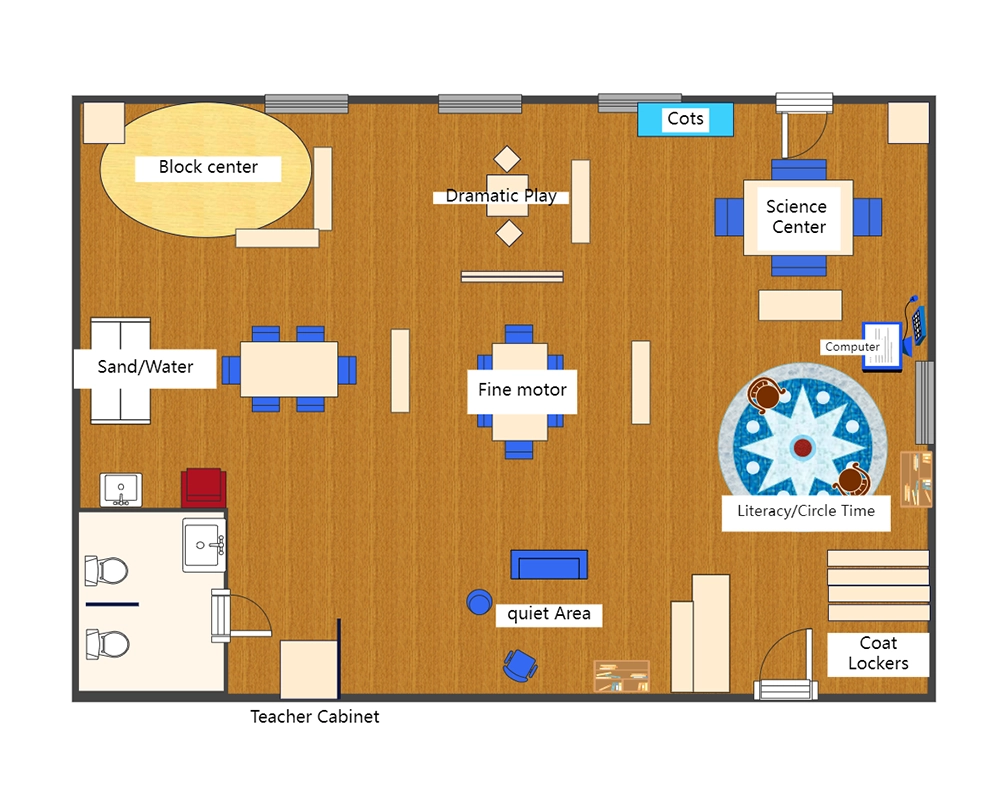

Preschool Classroom Setup Tips #1 – Optimize Physical Space
Optimizing physical space in a preschool classroom is fundamental to creating an environment that encourages learning, play, and exploration. A practical classroom layout should be open, flexible, and adaptable to various activities and teaching methods. Here are some detailed strategies:
- Flexible Furniture and Multi-functional Space: Using lightweight and movable furniture is critical to creating a versatile classroom. Chairs, tables, and storage units that can be easily reconfigured allow teachers to adapt the space for different activities, whether it’s group work, individual tasks, or playtime. For example, tables with wheels can be quickly moved aside to create a large open area for movement activities or circle time. Multi-functional furniture, such as storage benches that double as seating, helps maximize the use of space and keeps the classroom organized.
- Defined Learning Zones: Creating distinct areas for different types of activities helps children understand and respect boundaries. Define zones for reading, art, science, and dramatic play with clear visual and physical boundaries. Use rugs, bookshelves, or low partitions to delineate these spaces. For instance, a cozy reading corner with soft cushions and a bookshelf encourages children to spend time with books, while an art area equipped with easels, art supplies, and a sink fosters creativity. Ensuring these zones are well-organized and stocked with relevant materials will make it easier for children to engage in activities independently.
- Clear Pathways and Safety Considerations: Clear pathways are essential for safety and smooth movement within the classroom. Arrange furniture to create logical routes that children can follow, minimizing the risk of collisions and falls. Keep high-traffic areas free of obstacles and ensure emergency exits are always accessible. In addition, the height and stability of furniture should be considered to prevent tipping and other accidents. Use non-slip mats and secure heavy items to the wall to further enhance safety.
- Storage Solutions to Minimize Clutter: Effective storage solutions are crucial in maintaining an organized and clutter-free classroom. Use a combination of open shelves, bins, and labeled containers to store materials and supplies. Transparent bins make it easy for children to find and put away items, fostering independence and responsibility. Use vertical storage options like wall-mounted shelves or pegboards to maximize space. Rotate toys and materials periodically to keep the environment fresh and stimulating for the children.
By implementing these strategies, you can create a functional and inviting classroom, fostering a conducive environment for children to explore and grow.
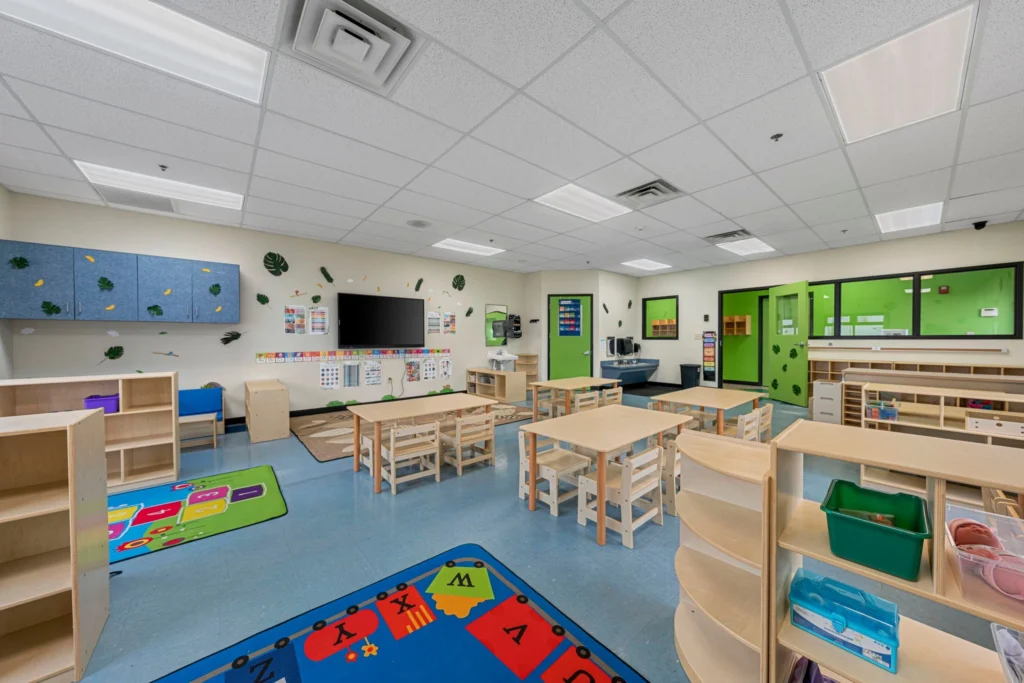


These are our clients’ preschool classroom designs! If you find this arrangement delightful, why not bring the same thoughtful design to your space?
Preschool Classroom Setup Tips #2 – Decor and Visual Appeal
Decor and visual appeal are crucial in creating an engaging and stimulating learning environment for preschoolers. A thoughtfully chosen decor can make the classroom feel welcoming, vibrant, and conducive to learning. Here are some comprehensive tips:

Choosing the Right Color Scheme
The colors used in a classroom can significantly impact the mood and behavior of children. Opt for a balanced color scheme that combines soothing and stimulating colors. Soft blues and greens can create a calming atmosphere, while bright yellows and reds add energy and excitement. For example, painting the walls in a neutral color and using bright accents for furniture and decorations can create a balanced and inviting space. Avoid overly bright or dark colors that might distract or overwhelm young children.
Incorporating Educational Decor
Decorations should not only be visually appealing but also serve an educational purpose. Incorporate alphabet charts, number lines, and thematic posters to reinforce learning concepts. For instance, a wall decorated with an alphabet mural can help children recognize letters and sounds. Educational posters about shapes, colors, and animals can also be visual aids during lessons. Interactive wall displays like felt or magnetic boards allow children to engage with the decor and enhance their learning experience.

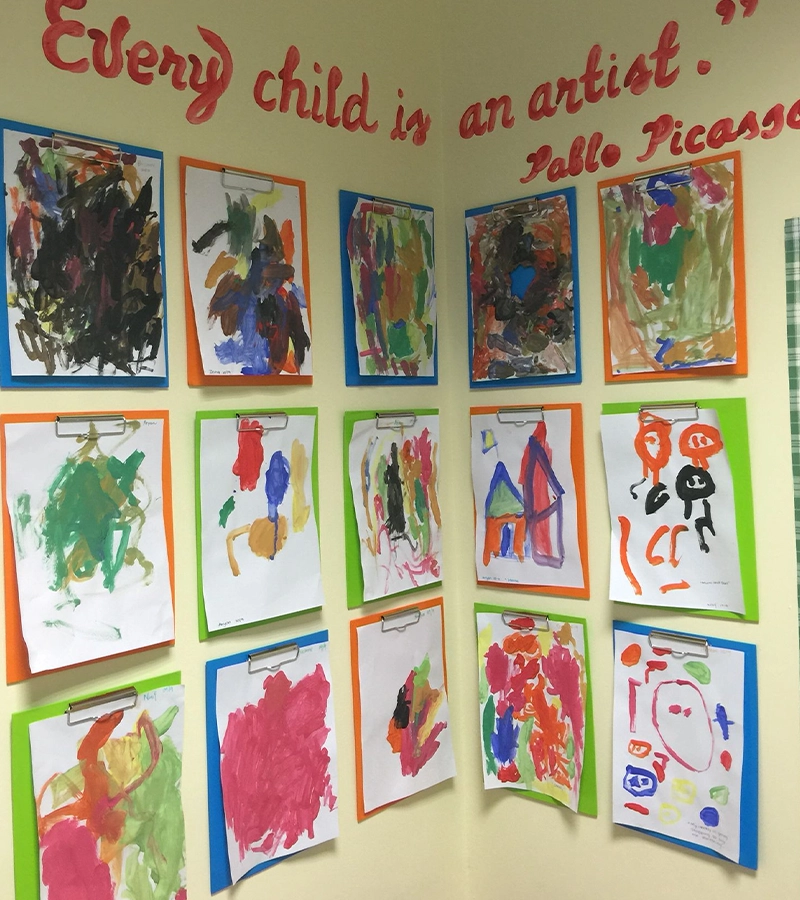
Displaying Children’s Artwork
Showcasing children’s artwork is a great way to personalize the classroom and make children feel valued. Create a dedicated art display area where children’s creations can be hung at eye level. Rotate the displays regularly to feature new pieces and keep the environment dynamic. This not only decorates the classroom but also boosts children’s self-esteem and encourages creativity. Additionally, consider involving children in decorating, such as creating seasonal decorations or themed projects, to foster a sense of ownership and pride in their environment.
Seasonal and Thematic Decorations
Changing decorations according to seasons or classroom themes can keep the environment fresh and exciting. For example, you could decorate the classroom in autumn with leaves, pumpkins, and harvest-themed items to reflect the season and teach children about nature. For thematic learning, if the theme is “Under the Sea,” decorate the classroom with sea creatures, ocean colors, and related books and materials. These seasonal and thematic changes enhance visual appeal and provide thematic learning and storytelling opportunities.


Balancing Decor to Avoid Overstimulation
While creating a visually stimulating environment is essential, it’s equally crucial to avoid overstimulation. Too many bright colors and busy patterns can be distracting for young children. Strive for a balance using calm, neutral backgrounds with pops of color and interest. Ensure the classroom decor is organized and not cluttered, providing visual rest areas where the eyes can relax. Thoughtfully curated decor can make the classroom a welcoming and stimulating place for children to learn and grow.
Focusing on these aspects ensures that your preschool classroom setup is functional and appealing, providing a perfect environment for young learners to explore and grow.
Preschool Classroom Setup Tips #3 – Age-Appropriate Furniture and Equipment
Selecting age-appropriate furniture and equipment is essential for creating a safe and comfortable preschool learning environment. The right furniture helps children feel secure and encourages proper posture and engagement in classroom activities. Here are some detailed considerations:
Ensuring Proper Size and Scale
Furniture in a preschool classroom should be scaled to the size of young children. Chairs, tables, and other furniture pieces that are too large can be uncomfortable and even hazardous. Conversely, too small furniture can hinder proper posture and limit mobility. Opt for furniture specifically designed for preschool-aged children, ensuring that:
- Chairs: A seat height allows children’s feet to rest flat on the floor, promoting good posture. Chairs should also be lightweight so children can move them quickly.
- Tables: These are low enough for children to sit comfortably and reach their work without straining. Adjustable tables can be an excellent investment to accommodate children of different heights and activities.




Safety Standards and Ergonomic Design
Safety is a top priority in any preschool classroom setup. Furniture should meet or exceed safety standards to prevent injuries. Look for:
- Rounded Edges: To minimize the risk of bumps and bruises. All furniture should have smooth, rounded corners and edges.
- Stable Bases: Furniture should have a broad base to prevent tipping. For example, tables and chairs with a wider footprint provide better stability.
- Durable Materials: Furniture made from sturdy, non-toxic materials will withstand the wear and tear of daily use by young children.
Ergonomically designed furniture helps children maintain a healthy sitting posture, which is crucial for their physical development and comfort. Vital components include chairs with back support and tables that encourage proper arm positioning.
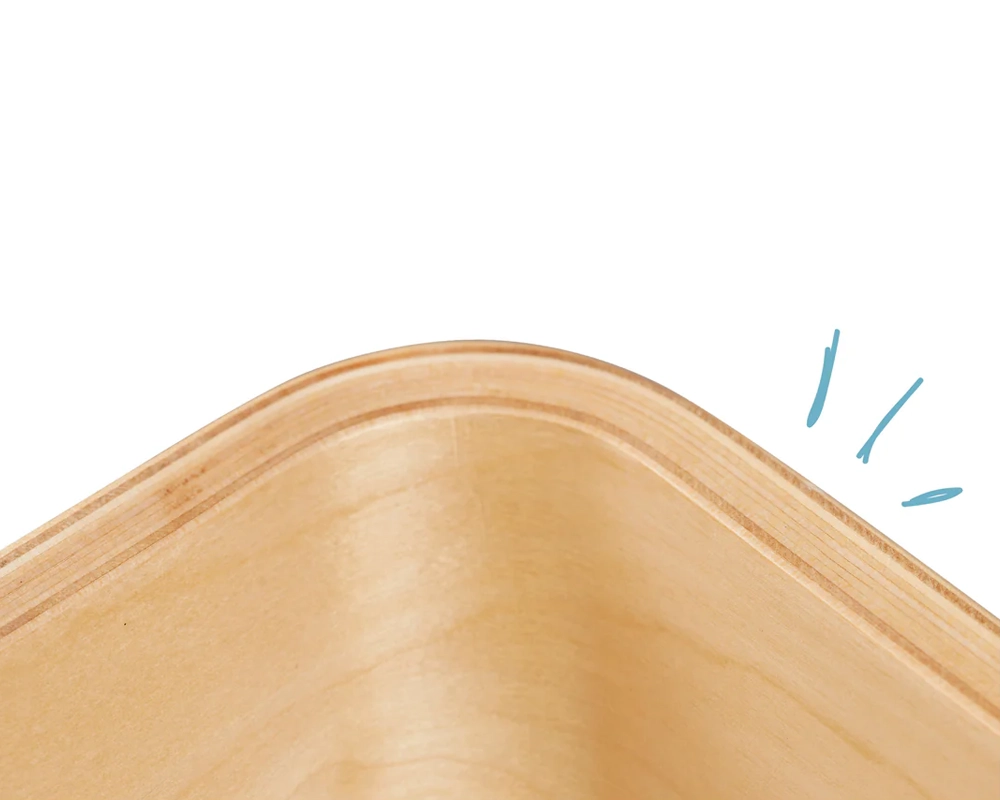


Accessible and Functional Storage Solutions
Preschool children benefit from furniture that promotes independence and organization. Low shelves and accessible storage units allow children to retrieve and put away materials independently, fostering responsibility and self-reliance. Consider:
- Open Shelving: Use open shelves that are within children’s reach. This helps with organization and makes it easier for children to see and choose materials independently.
- Storage Bins: Clearly labeled bins and containers can help children understand where items belong. Using pictures along with words on labels can aid in early literacy development.



Multi-functional and Adaptable Furniture
Furniture that serves multiple purposes can save space and provide versatility in the classroom. Examples include:
- Storage Benches: These can be used for seating and storing toys, books, or other materials.
- Convertible Tables: Tables can be adjusted in height or converted into different shapes to support various activities, from group work to individual tasks.
Incorporating these elements into your preschool classroom setup ensures that the environment is safe, functional, and conducive to learning, catering to the developmental needs of young children.




Preschool Classroom Setup Tips #4 – Health and Hygiene Considerations
Maintaining health and hygiene in a preschool classroom is critical to creating a safe and welcoming environment for children. Good health practices help prevent the spread of illness and ensure children can learn and play in a clean, safe space.
A regular and thorough cleaning routine is essential for maintaining hygiene. This includes daily cleaning of surfaces, toys, and floors. High-touch areas like doorknobs, light switches, and tabletops should be cleaned daily. Scheduling a deeper clean at least once a week to sanitize all surfaces, wash fabric items (like cushion covers and soft toys), and mop floors with disinfectant is crucial. Using child-safe, non-toxic cleaning products protects children from harmful chemicals.
Hand hygiene is one of the most effective ways to prevent the spread of germs. Encourage regular handwashing by installing child-height sinks with soap dispensers and paper towels in the classroom. Handwashing stations should be easily accessible and always stocked. Providing alcohol-based hand sanitizer at critical points around the school, such as near the entrance and in activity areas, is also crucial when handwashing isn’t feasible. Displaying posters that illustrate proper handwashing techniques can remind and teach children how to clean their hands effectively.

Establishing and enforcing health policies can help keep the classroom environment healthy. Communicate to parents that unwell children should stay home to prevent the spread of illness in the classroom. Ensure all children have up-to-date vaccinations according to local health regulations and guidelines. Conduct regular health screenings for symptoms of common diseases, such as fever, cough, or rashes, to identify and manage potential outbreaks early.
Educating children about good hygiene practices is crucial. Make hygiene part of the daily routine by integrating handwashing into the daily schedule, such as before meals, after using the restroom, and after outdoor play. Teach children to sneeze or cough into their elbows or tissue and to wash their hands afterward.
Good ventilation is essential to maintaining air quality and reducing the spread of airborne germs. Ensure the classroom is well-ventilated by opening windows regularly to allow fresh air to circulate, weather permitting. Air purifiers with HEPA filters can also remove airborne particles, including dust, pollen, and germs.
Be aware of any allergies or special health needs among the children and plan accordingly. It is essential to have an action plan for children with allergies, including where medications like EpiPens are stored and how to administer them. A nut-free policy for children with severe nut allergies can prevent accidental exposure.

Preschool Classroom Setup Tips #5 – Organizing Learning Areas
Organizing learning areas effectively is critical to creating a structured and engaging preschool classroom. Well-defined zones for various activities help children understand boundaries, encourage independence, and make the classroom environment more manageable for teachers. Here are some detailed strategies:
Creating Distinct Activity Zones
Designating specific areas for different activities can significantly enhance the functionality of a preschool classroom setup. For instance:
- Reading Corner: A cozy, quiet area with comfortable seating, bookshelves, and soft lighting encourages children to spend time reading and developing literacy skills. Use rugs and pillows to make the space inviting and comfortable.
- Art Station: A space with tables, easels, and ample art supplies like crayons, paints, and paper fosters creativity. Ensure that this area is easy to clean and that materials are accessible to children.
- Science and Discovery Area: Include interactive elements like magnifying glasses, nature collections, and simple experiments to stimulate curiosity and scientific thinking.
- Block Play Area: Blocks and construction toys encourage fine motor skills and imaginative play. Provide enough space for building and ensure that the area is safe for movement.
- Dramatic Play Area: Equip this zone with costumes, props, and playsets to encourage role-playing and social skills development.

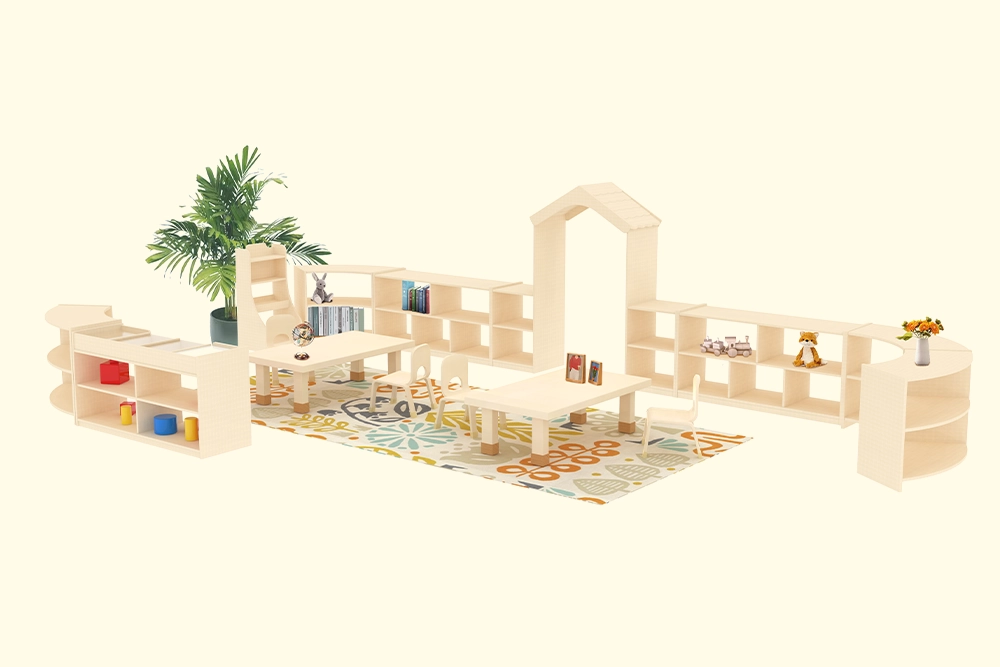


Using Visual and Physical Cues
Clear visual and physical cues help children identify and navigate different learning areas. Use colorful rugs, signs, and labels to define each zone. For example, a large green carpet could signify the reading corner, while a blue rug might indicate the art station. Label shelves and bins with pictures and words to help children understand where materials belong, promoting organization and independence.

Ensuring Accessibility and Organization
Materials and supplies should be easily accessible to children to foster independence and responsibility. Use low shelves and storage bins that children can reach. Rotate materials periodically to maintain interest and provide new learning opportunities. Ensure that each area has enough space to prevent overcrowding and that pathways between zones are clear and safe.


Flexibility and Adaptability
A well-organized preschool classroom setup should be flexible enough to adapt to different activities and needs. Consider using furniture on wheels or lightweight, movable pieces that can be easily reconfigured. This allows for a dynamic classroom environment accommodating group activities, individual work, and free play.
By thoughtfully organizing learning areas, you create a structured, engaging environment that supports children’s development and makes classroom management more efficient.


Preschool Classroom Setup Tips #6 – Creating a Comfortable Atmosphere
Creating a comfortable atmosphere in a preschool classroom is essential for making children feel safe, relaxed, and ready to learn. A welcoming and cozy environment helps reduce anxiety, supports concentration, and fosters positive interactions among children. Here are some comprehensive strategies:
- Utilizing Soft Furnishings and Cozy Spaces: Incorporate soft furnishings like rugs, cushions, bean bags, and upholstered furniture to create inviting and comfortable areas within the classroom. For example, a reading nook with soft seating and plush pillows can provide a quiet retreat for children. Use rugs to define different zones and add warmth to the classroom.
- Balancing Lighting: Lighting plays a significant role in creating a comfortable atmosphere. Use a mix of natural and artificial light to ensure the classroom is well-lit without being too harsh. Large windows bring natural light, creating a bright and cheerful environment. Complement natural light with soft, adjustable artificial lighting to maintain a warm ambiance throughout the day. Avoid using fluorescent lamps, which can be too harsh and create glare.
- Incorporating Natural Elements: Bringing elements of nature into the classroom can create a calming and refreshing atmosphere. Add plants and natural materials like wood and stone to the decor. A small indoor garden or a corner with potted plants can enhance the aesthetic appeal and improve air quality. Nature-themed decorations and materials can also create a more inviting and relaxing environment for children.
- Temperature Control: Maintaining a comfortable temperature in the classroom is crucial. Ensure that the heating and cooling systems function properly to keep the room at a consistent and comfortable temperature. Use fans or air purifiers if necessary to improve air circulation and quality. Children are more likely to be comfortable and focused in an environment that is neither too hot nor too cold.
- Minimizing Noise Levels: High noise levels can distract and stress young children. Use soft furnishings, carpets, and acoustic panels to absorb sound and reduce noise levels in the classroom. Create designated quiet areas where children can retreat if they feel overwhelmed by noise or activity. Teaching children to use indoor voices and establishing noise control rules can also help maintain a peaceful atmosphere.
- Personalizing the Space: Allowing children to have some input in the classroom setup can make the environment feel more personal and welcoming. Display children’s artwork, projects, and photos around the classroom to create a sense of ownership and pride. This personal touch can make the classroom feel like a second home, where children are more comfortable and engaged. By focusing on these aspects, you can create a preschool classroom setup that is comfortable and conducive to learning. A well-organized, cozy, inviting environment helps children feel secure and ready to explore, learn, and grow.




Preschool Classroom Setup Tips #7 – Utilizing Storage Solutions
Effective storage solutions are essential for maintaining an organized and efficient preschool classroom. Proper storage helps keep the classroom tidy, ensures that materials are easily accessible for teachers and students, and promotes independence among young learners. Here are some detailed strategies for utilizing storage solutions in your preschool classroom setup:
Low Shelves and Accessible Storage
One of the key principles of an effective preschool classroom setup is ensuring that storage solutions are accessible to young children. Low shelves are perfect for this purpose, allowing children to see and reach materials independently. This accessibility fosters independence and responsibility, as children can take and return items without adult assistance. For example, placing art supplies, books, and toys on low shelves encourages children to select and use materials independently.

Clear Bins and Labels
Using clear bins and containers for storage is another effective strategy. Clear bins make it easy for children to see what is inside, saving time and reducing frustration when looking for specific items. Labeling each bin with pictures and words further enhances organization and helps children learn to identify and categorize objects. For instance, a bin labeled with a picture of blocks and the word “Blocks” helps children quickly locate and return building toys.
Rotating Materials
Consider rotating materials and toys periodically to keep the classroom environment fresh and stimulating. This strategy prevents overcrowding and ensures children can access various activities without feeling overwhelmed. For example, you can rotate puzzles, games, and thematic learning materials every few weeks. Store excess materials in labeled bins in a designated storage area and bring them out as needed.


Utilizing Vertical Space
Maximizing vertical space is a great way to increase storage capacity without wasting valuable floor space. Wall-mounted shelves, pegboards, and hooks can store and display items like art supplies, backpacks, and coats. Pegboards with hooks are incredibly versatile, as they can be rearranged to accommodate different items. For instance, hanging baskets on a pegboard can hold scissors, glue sticks, and other small art supplies.
Multi-functional Furniture
Incorporating multi-functional furniture into your preschool classroom can save space and provide additional storage. Furniture pieces like storage benches, tables with built-in shelves, and cubbies can serve dual purposes. For example, a storage bench can provide seating while offering space to store books, toys, or other materials. Multi-functional furniture helps maintain a clutter-free environment and makes the most available space.


Teacher Storage Solutions
In addition to child-accessible storage, it’s essential to have dedicated storage solutions for teachers. Lockable cabinets and drawers can securely store important documents, supplies, and personal items. Organizing teacher materials helps streamline classroom management and ensures that resources are readily available when needed.
By implementing these storage solutions, you can create an organized, efficient, and child-friendly classroom environment. Proper storage enhances the space’s functionality and supports children’s independence and engagement in learning activities.
We can help transform your preschool classroom setup with our expertly designed-storage solutions!
Preschool Classroom Setup Tips #8 – Designing Interactive Learning Stations
Creating interactive learning stations is crucial to a successful preschool classroom setup. These stations offer children hands-on activities that make learning fun and engaging. Here are some detailed and practical tips for setting up effective learning stations:
Different Learning Stations for Different Skills
Setting up different stations for various activities helps kids learn and play in multiple ways. Here are some ideas:
- Math Station: Include counting toys, puzzles, and number games. Counting bears, number cards, and abacuses help children learn math skills. For instance, you can have a small table with counting beads and simple math puzzles that teach addition and subtraction.
- Science Station: Set up magnifying glasses, simple experiments, and nature items like leaves and rocks. This station sparks curiosity about the world. Include hands-on experiments like mixing colors or observing insects in a bug box.
- Music Station: Provide musical instruments like tambourines, xylophones, and shakers. Kids can explore sounds and rhythms. You can also include a small music player with headphones where children can listen to different types of music.
- Art Station: Offer a variety of art supplies such as crayons, markers, paints, paper, and clay. This station encourages creativity. Make sure to have easy-to-clean surfaces and accessible storage for materials.
- Literacy Station: Create a cozy reading corner with various books, comfortable seating, and story props. Include alphabet games, flashcards, and writing tools to promote literacy skills.
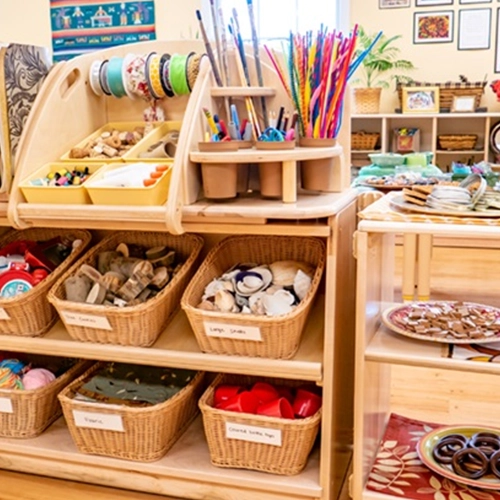



Make Stations Easy to Use
Each station should be easy for children to use and enjoy. Here’s how:
- Child-Sized Furniture: Use small tables and chairs that are the right size for kids. Low shelves make it easy for them to reach and put away materials. Ensure that all furniture is stable and safe for children to use.
- Color-Coded Areas: Use different colors for each station to help kids find their way around the classroom. For example, the reading area could have a green rug, while the art area could have a red one.
- Fun Displays: Decorate stations with colorful posters and interactive elements like flip charts and magnetic boards. Display children’s artwork and projects to make the space more personalized and engaging.


Add Sensory Activities
Sensory play is important for young children. Include sensory elements in your stations:
- Sensory Station: Offer materials like sand, water, play dough, and sensory bins filled with rice or beans. Add tools like scoops, funnels, and measuring cups to enhance the sensory experience. Change the sensory materials regularly to keep children engaged.
- Textures and Sounds: Include items with different textures and sounds, such as textured fabrics, sensory balls, and sound-making toys like maracas. You can also create a sensory wall with various textures for children to touch and explore.
Encourage Group Play
Stations that promote group activities help kids learn to work together:
- Building Station: Provide blocks, building sets, and construction toys. Kids can work together on building projects. Include building materials like wooden blocks, LEGO sets, and magnetic tiles to encourage creativity and teamwork.
- Pretend Play Station: Set up costumes, props, and themed playsets like a grocery store, kitchen, or doctor’s office. Pretend play helps kids develop social skills, imagination, and language abilities. Rotate the themes regularly to keep the play experience fresh and exciting.



Change Stations Regularly
Keep the learning stations fresh by updating them regularly:
- Seasonal Themes: Change the materials to match the season. For example, add leaves, pumpkins, and acorns to the science station in the fall. In winter, include snowflakes, mittens, and holiday-themed activities.
- Cultural Themes: Include books, artifacts, and art projects that teach kids about different cultures. Celebrate various cultural holidays and traditions to broaden children’s world understanding.
Clear Instructions and Visuals
Make sure each station has clear instructions and visual guides:
- Instruction Cards: Use simple cards with pictures to explain each station’s use. Laminate them for durability and place them where children can easily see and refer to them.
- Step-by-Step Guides: Display easy-to-follow guides that show steps for planting a seed, building a block tower, or doing a simple experiment. These guides can help children work independently and gain confidence in their abilities.

Creating a Welcoming Environment
Each learning station should be inviting and comfortable:
- Soft Furnishings: Use rugs, cushions, and bean bags to create cozy spaces. Soft furnishings make the classroom feel welcoming and provide comfortable spots for children to relax and engage in activities.
- Decorative Elements: Add colorful posters, artwork, and thematic decorations to make each station visually appealing. Use children’s artwork to decorate the space, giving them a sense of ownership and pride.
- Adequate Lighting: Ensure each station is well-lit, using natural and artificial light sources. Proper lighting makes activities more manageable and more enjoyable for children.
Following these detailed tips, you can create interactive learning stations that make your preschool classroom setup more engaging and effective. These stations will help children learn through play, explore new ideas, and work together, providing a rich and stimulating environment for young learners.
Preschool Classroom Setup Tips #9 – Incorporating Nature and Outdoor Elements
Incorporating nature and outdoor elements into your preschool classroom can significantly enhance the learning environment. Connecting children with nature stimulates their curiosity and supports their physical, emotional, and cognitive development. Here are some detailed strategies to integrate nature and outdoor elements into your classroom:
Indoor Nature Elements
Bringing nature indoors creates a calming and stimulating environment. Consider these ideas:
- Classroom Plants: Introduce a variety of plants into the classroom. Plants like spider plants, pothos, and succulents are easy to maintain and can improve air quality. Children can take turns watering the plants, fostering a sense of responsibility and connection to nature.
- Nature Tables: Create a table where children can explore natural items such as leaves, rocks, pinecones, and shells. Rotate the items regularly to reflect different seasons and themes. Encourage children to bring natural items they find to add to the table.
- Aquariums and Terrariums: An aquarium with fish or a terrarium with small reptiles or insects can captivate children’s interest and teach them about animal care and ecosystems. Ensure that these setups are safe and properly maintained.


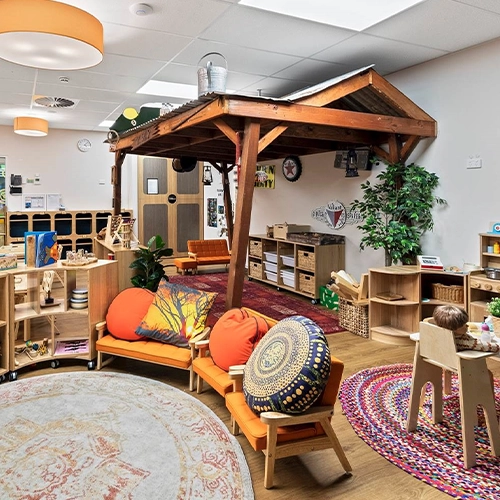
Outdoor Learning Spaces
Utilizing outdoor spaces for learning and play is a key aspect of a holistic preschool classroom setup. Here are some tips:
- Outdoor Classroom: Set up an outdoor classroom with portable seating, a whiteboard, and a weather-resistant canopy. This space can be used for lessons, storytime, and group activities, providing a change of scenery and fresh air.
- Gardening Area: Create a garden where children can plant and care for flowers, vegetables, and herbs. Gardening teaches children about plant life cycles, responsibility, and healthy eating. Provide child-sized gardening tools and designate specific plots for each child.
- Nature Walks: Regularly schedule nature walks around the school grounds or nearby parks. These walks allow children to observe plants, animals, and seasonal changes. Encourage children to collect items like leaves and rocks to discuss in the classroom.

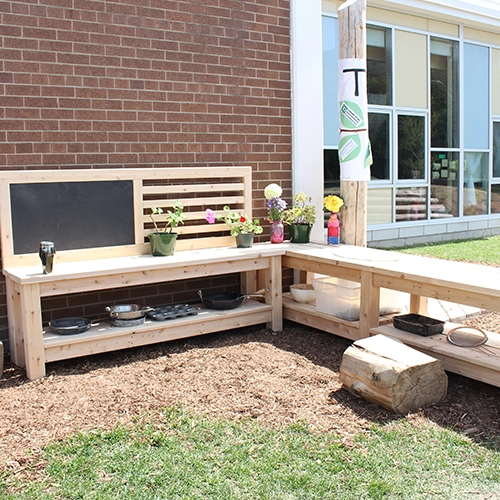


Natural Materials
Using natural materials in classroom décor and learning materials can create a more engaging and aesthetically pleasing environment:
- Wooden Furniture: Choose furniture made from natural wood rather than plastic. Wooden tables, chairs, and shelves add warmth and a natural touch to the classroom.
- Nature-Inspired Art: Decorate the classroom with nature-inspired artwork and photos. Use posters of animals, landscapes, and plants to create a visually appealing environment as a learning tool.
- Natural Play Materials: Incorporate natural materials like wooden blocks, stones, and shells into play areas. These materials can be used in various creative and educational activities.
Sensory and Outdoor Play Areas
Outdoor play areas should include elements that stimulate children’s senses and encourage physical activity:
- Sand and Water Play: Set up a sandbox and a water play area with buckets, shovels, and molds. These activities help develop fine motor skills and sensory experiences.
- Climbing Structures: Install safe and age-appropriate climbing structures, slides, and balance beams to promote physical activity and gross motor skills.
- Outdoor Art Station: Create an outdoor art station where children can paint, draw, and create crafts using natural materials. Use easels, washable paints, and large paper rolls for messy but fun art projects.
Incorporating nature and outdoor elements into your preschool classroom creates a rich learning environment that fosters curiosity, responsibility, and a connection to the natural world.
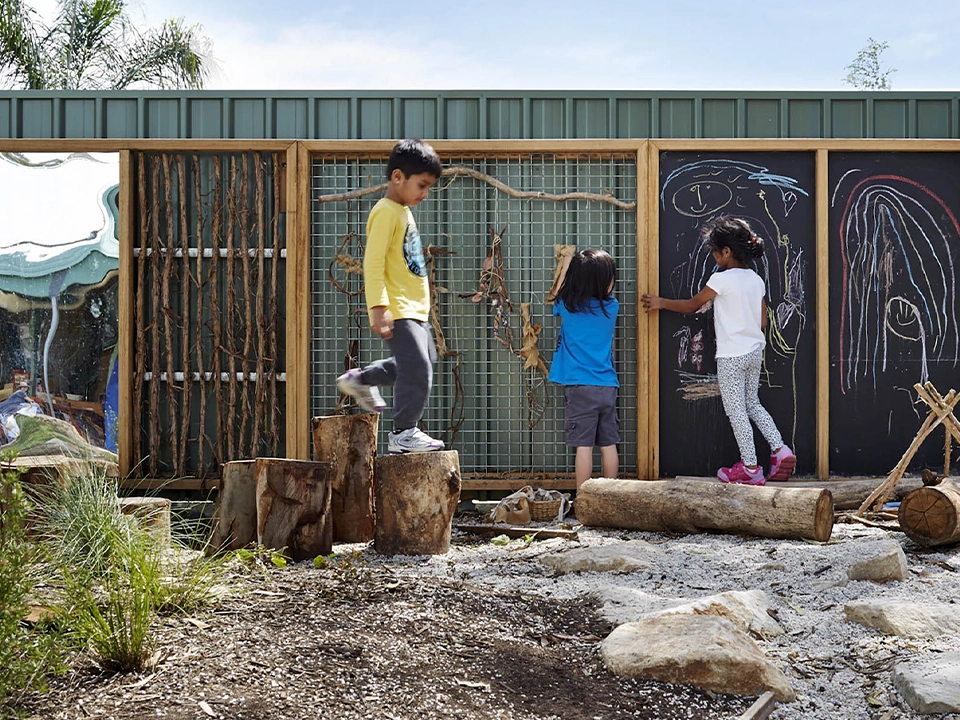


Preschool Classroom Setup Tips #10 – Fostering a Positive Emotional Environment
Fostering a positive emotional environment in your preschool classroom setup is crucial for children’s social and emotional development. A nurturing atmosphere helps children feel safe, valued, and ready to learn. Here are some detailed strategies to create a positive emotional environment:
Building Strong Relationships
Positive relationships between teachers and students are the foundation of a supportive classroom environment:
- Warm Greetings: Greet each child warmly as they arrive in the morning. A simple smile, hug, or handshake can make children feel welcome and valued.
- Personal Connections: Take time to get to know each child individually. Learn about their interests, strengths, and any challenges they may face. Use this knowledge to tailor your interactions and support their needs.
- Consistent Routines: Establish consistent routines to provide a sense of security. Predictable schedules help children understand what to expect and reduce anxiety.
Encouraging Positive Interactions
Promote positive interactions among children to build a sense of community and cooperation:
- Circle Time: Use circle time to encourage group discussions, share experiences, and build a sense of belonging. Discuss topics like kindness, sharing, and teamwork.
- Group Activities: Plan activities that require cooperation, such as group art projects, building tasks, and team games. These activities teach children how to work together and support each other.
- Conflict Resolution: Teach children conflict resolution skills. Use role-playing and real-life situations to practice problem-solving, taking turns, and expressing feelings respectfully.
Creating a Calm and Inviting Space
The physical environment plays a significant role in emotional well-being:
- Comfortable Areas: Create cozy corners with soft seating, pillows, and blankets where children can relax and take a break if they feel overwhelmed. A quiet reading nook or a sensory space with calming materials can be very effective.
- Soft Colors: Use soft, soothing colors in the classroom decor to create a calm atmosphere. Avoid overly bright or chaotic patterns that can be overstimulating.
- Natural Light: Maximize natural light in the classroom to create a bright and cheerful environment. Use curtains or blinds to control the amount of light and reduce glare.
Promoting Emotional Literacy
Helping children understand and manage their emotions is a key part of their development:
- Emotion Charts: Use emotion charts to help children identify and express their feelings. Charts with faces showing different emotions can help discuss their feelings.
- Storytelling and Role-Playing: Use books and stories to discuss emotions and scenarios. Role-playing activities can help children practice responding to different emotional situations.
- Mindfulness Activities: Introduce simple mindfulness activities like deep breathing, yoga, and guided relaxation. These practices can help children manage stress and develop self-regulation skills.
Celebrating Achievements
Recognizing and celebrating children’s achievements boosts their self-esteem and motivation:
- Positive Reinforcement: Use positive reinforcement to acknowledge good behavior, effort, and achievements. Praise, stickers, and small rewards can be very motivating.
- Achievement Boards: Create a board to display children’s work and accomplishments. Highlight individual and group successes to build confidence and pride.
- Special Events: Celebrate milestones and occasions with class parties, awards, and parent-involved activities. These events create a sense of community and joy.
By fostering a positive emotional environment in your preschool classroom, you support children’s social and emotional growth, helping them become confident, empathetic, and resilient individuals.


Budgeting for an Effective Classroom
Budgeting effectively is essential for setting up a preschool classroom that meets educational goals without overspending. Thoughtful budgeting ensures you have the necessary resources to create a safe, engaging, and supportive learning environment. Here are some detailed strategies to help you budget effectively for your preschool classroom setup:
- Prioritize Essential Items: Start by identifying the essential items for your classroom. These include furniture, educational materials, safety equipment, and basic supplies. List must-have items, such as child-sized tables and chairs, storage units, books, art supplies, and teaching aids. Prioritizing these essentials ensures that your primary needs are met first, creating a solid foundation for your classroom.
- Set a Realistic Budget: Determine a realistic budget based on available funds and expected expenses. Break down the budget into categories, such as furniture, learning materials, decor, and maintenance. Allocate funds to each category based on your priorities and needs. Sticking to this budget is essential to avoid overspending and ensure that all necessary items are purchased.
- Explore Cost-Effective Options: Look for cost-effective options when purchasing classroom items. Consider second-hand furniture, refurbished equipment, and bulk buying to save money. Websites like eBay, Craigslist, and local buy-and-sell groups often have gently used classroom furniture and materials at a fraction of the cost. Additionally, reach out to other schools or educational institutions with surplus items.
- Utilize Community Resources: Leverage community resources to enhance your classroom setup without significant expense. Local businesses, community organizations, and parents can be valuable sources of donations and support. Organize a donation drive or wish list for parents and community members willing to contribute supplies, books, or furniture. Additionally, consider applying for grants and educational funds that can provide financial assistance for classroom needs.
- DIY and Upcycling Projects: Incorporate DIY and upcycling projects into your classroom setup to save money and add a personal touch. Simple projects can be cost-effective and rewarding, such as making your storage bins from cardboard boxes or upcycling old furniture with a fresh coat of paint. Involving children in these projects can also teach them valuable lessons about creativity and resourcefulness.
- Plan for Ongoing Expenses: Budgeting for a preschool classroom setup isn’t just about the initial costs—plan for ongoing expenses, such as replenishing supplies, maintaining equipment, and replacing worn-out items. Allocate a portion of your budget for these recurring costs to ensure your classroom remains well-equipped and functional throughout the school year.
- Track Spending and Adjust as Needed: Keep a detailed record of all expenditures to monitor your spending and stay within budget. Regularly review your budget and adjust as necessary. If certain areas are underfunded or have extra funds in another category, reallocate resources to better meet your needs. Staying flexible and responsive to changes ensures that your budget remains effective and aligned with your classroom goals.
By carefully managing your budget, you can create an effective and engaging preschool classroom setup that supports learning and development. Thoughtful planning, cost-effective strategies, and community involvement will help you maximize resources and provide a nurturing environment for your students.
Xiair WorldUnderstand One-Stop Solution for All Your Preschool Classroom Setup Needs!
In conclusion, setting up a preschool classroom involves careful planning and attention to detail. By incorporating elements such as age-appropriate furniture, health and hygiene considerations, well-organized learning areas, a comfortable atmosphere, effective storage solutions, interactive learning stations, nature and outdoor elements, and a positive emotional environment, you can create a space where children thrive. Each of these components plays a crucial role in fostering a nurturing, engaging, and supportive environment for young learners.
At Xiair World, we are dedicated to helping you achieve the perfect classroom setup. With our comprehensive, one-stop solutions, we ensure that every aspect of your classroom is designed to support the holistic development of preschoolers. Contact us today to learn how we can assist you in creating an inspiring and effective learning environment for your students.



